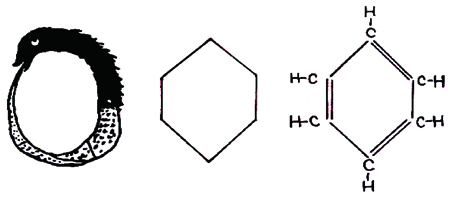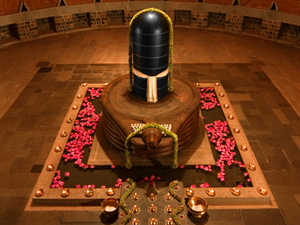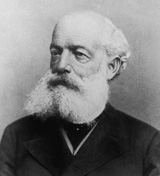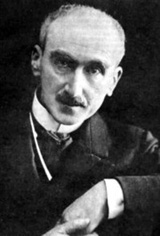Consciousness and health
Instinct and intuition
Instinctual knowledge
When the Tsunami hit the Asian coastline on 26th December 2004, the Sentinelese, one of the few existing uncontacted primitive tribes of the world known for their violent rejection of any overture by outsiders, survived by their sixth sense, which we do not possess any more. Using their ancient instinctual knowledge of the movement of wind, sea and birds, they had withdrawn from the coastline and moved to higher ground on their island long before the disaster struck.
This instinctual knowledge that the primitive humans possessed has been lost to a rational world that prides itself on being rid of all superstitions. What is missed is that the primitive subject was not an isolated freak but in oneness with the cosmos through an emotional ‘unconscious identity’ with natural phenomena that delivered symbolic messages (1). To the primitive psyche, Matter was not inert but vibrant with the presence of the Earth Goddess, thunder was the wrath of god and the river had a spirit and was replete with its nymphs while the tree too had its own life-principle. The primitive psyche was one with the whole cosmos and in that extended consciousness; one could decipher the messages from stones, plants, animals as well as sea, wind, cloud and lightning (2).
Though banished from the conscious awareness of the modern human being today, instinctual symbols still persist as rituals, whose origin we have lost, and which rise as symbols in dreams but which we usually cannot decipher and often dismiss as nonsensical. A still persisting ritual is the earth altar in India and China. In traditional Indian households, the earth altar has the Holy Basil or Tulsi (Ocimum sanctum) positioned in a square or circle that denotes the psyche.The Mother described that the Tulsi signified ‘Devotion’, on which she elaborated, “Modest and fragrant. It gives itself without seeking anything in return (3)”.
Often the earth altar is in the form of a Shiva lingam at the base of an ancient banyan tree. While the ancient tree symbolises the growth of the psyche unfolding through many lives (4), the Shiva lingam is a bare stone signifying that truth is naked (5).
Instinct in dreams
The primitive or basic instincts rise up dramatically in our dreams. As we have lost their meanings, we cannot decipher the hidden messages which are not only significant but at times can save us from many ordeals in life. Carl Jung describes a typical case:
“Another typical case was that of a lady who was living above herself. She was high and mighty in her daily life, but she had shocking dreams, reminding her of all sorts of unsavoury things. When I uncovered them, she indignantly refused to acknowledge them. The dreams then became menacing, and full of references to the walks she used to take all by herself in the woods, where she indulged in soulful fantasies. I saw her danger, but she would not listen to my many warnings. Soon afterwards, she was savagely attacked in the woods by a sexual pervert; but for the intervention of some people who heard her screams, she would have been killed.
“There was no magic in this. What her dreams had told me was that this woman had a secret longing for such an adventure (6)”.
In other words, she harboured in her psyche such raw masochistic instincts that were revealed in her dreams. These instinctual feelings were so strong that she ignored the warnings by her therapist. Obviously, she did not expect the price she had to pay.
Instincts which are perceived by senses can manifest in dreams and fantasies as symbols. Jung named such manifestations as archetypes which can remain in the collective unconscious and be accessible to many people across space and time. Our earliest fantasies are recorded in our myths and fables which have been carried from the psyche of the archaic man to the present mind-set through the collective unconscious. As an embryologist studies the comparative embryonic anatomy of the hierarchy of species that have successively appeared, a psychologist needs to study the “comparative anatomy of the psyche (7)” which is recorded in mythology. It is necessary to understand the primitive psyche if we wish to explore the contemporary mind-set that has lost the meaning of the symbols that appear in our dreams and visions.
From Instinct to intuition
To this great exposure that Jung has given, the consciousness perspective arising from Sri Aurobindo’s paradigm would add another perspective. While the study of the past by exploring the archetypes in the collective unconscious is an important step, an exploration of the superconscious to create a receptive space for the Unborn Idea is also significant. The Unborn Idea that can descend through the phenomenon of intuition can bring in a new dimension hitherto not experienced. It can also use an existing archetype as a template to manifest an entirely new creative idea. The classic example is the age-old symbol of a snake eating its tail which subjects have dreamt for centuries. (Even a few days back, in January 2019, when this correspondent was explaining archetypal symbols during a post-graduate counselling course in Calcutta, one female student immediately narrated how she had been dreaming this symbol without knowing its significance). Jung showed how this symbol was portrayed in a third century B.C Greek manuscript (8).
When the 19th Century German chemist, Kekulé dreamt this symbol, an intuitive idea stimulated his creative acumen to design the closed carbon ring that became the molecular structure of benzene and the forerunner of organic chemistry. Kekulé’s dream came at a time when his research had got stuck and he was struggling for a new idea. Stuart Holroyd narrates the speech Kekulé made at a conference of scientific colleagues:
“I turned the chair to the fireplace and sank into a half sleep. The atoms flitted before my eyes…wriggling and turning like snakes. And see, what was that? One of the snakes seized its own tail and the image whirled scornfully before my eyes. As though from a flash of lightning. I awoke. I occupied the rest of the night working out the consequences of the hypothesis (See Figure 1)… Let us learn to dream gentlemen, and then we may perhaps find the truth (9)”. The symbol of the snake was an archetypal symbol from the collective unconscious. The idea that leapt like a flash of lightning was an intuitive idea that came from higher echelons of consciousness.

Figure 1
The age-old symbol of the snake eating its tail is from a 3rd Century BC Greek manuscript that inspired the structure of the benzene molecule, a hexagon with a carbon and hydrogen atom at each point. [Adapted from Holroyd S. Dream Worlds: vide (9).
While instinct is an infra-rational mode of knowledge, at the other end of the spectrum is intuition which is a supra-rational mode of knowledge. Sri Aurobindo considers intuition to be a communication to the mind from superconscient realms. In a way it can be said that instinct is a lower form of intuition and thrives in our subconscious realms. Intuition on the other hand “brings to man those brilliant messages from the Unknown which are the beginning of his highest knowledge (10).” Bergson had a similar view in his last book, The two Sources of Morality and Religion which the noted Aurobindonian scholar, S.K. Maitra, quotes in his monograph:
“But just as there subsisted around animal instinct a fringe of intelligence, so human intelligence preserved a halo of intuition. The latter, in man, had remained fully disinterested and conscious, but it was only a faint glow and did not radiate very far. Yet it is from this that the light must come… (11)”
Intuition comes sporadically but when it comes to the mind, it often gets coated with ordinary mental constructs and gets diluted and even distorted. That is why, “Intuition is unable to give us the truth in that ordered and articulated form which our nature demands (12)”. A methodical discipline is needed to cultivate intuition as a supra-cognitive faculty. In fact, an unravelling of the techniques facilitating the receptivity to true intuitive thinking is going to be one of the hallmarks of an emergent consciousness-based psychology arising from Sri Aurobindo’s integral thought. An exploration of the collective unconscious is one part of the story; a concomitant probing of the superconscious is necessary for a true integral vision. It is through intuition that we can re-connect with the universal psyche — a capacity we lost in our zeal to build a rational world-order. It is through intuition that we would be able to decipher the messages that come through the cosmic consciousness, a capacity that the primitive man could do through instinctual knowledge. In fact, a developed intuition would perform the same functions that instincts could do but in a more organised way and from a higher denouement. We are not only inheritors of the past but at every living moment dynamic creators of the future. In a way, it is intuition that guides even our interpretation of instincts. After all, it was intuition that led Jung to the discovery of the archaic psyche and the collective unconscious.
References
1. Jung C, von Franz M-L (eds). Man and his Symbols. London: Picador (Pan Books): 1978, p. 85.
2. Ibid.
3. The Mother: Flowers and Their Messages. 4th ed. Pondicherry: Sri Aurobindo Ashram Trust; 1992, p. 179.
4. Jung C, von Franz M-L (eds). Man and his Symbols, p. 152.
5. Anirvan. Letters from a Baul: Life within Life. Kolkata: Sri Aurobindo Pathamandir; 1983, p. 179.
6. Jung C, von Franz M-L (eds). Man and his Symbols, p. 35.
7. Ibid., p. 57.
8. Ibid., p. 26.
9. Holroyd S. Dream Worlds. London: Aldus Books; 1976, p. 74.
10. Sri Aurobindo. Complete Works of Sri Auobindo, Volumes 21-22. Pondicherry: Sri Aurobindo Ashram Trust; 2006, p.73.
11. Maitra SK. An Introduction to the Philosophy of Sri Aurobindo. 2nd ed. Sri Aurobindo Ashram Trust; 1965, p. 25.
12. Sri Aurobindo. CWSA, Volumes 21-22, p.74.
Share with us (Comments, contributions, opinions)
When reproducing this feature, please credit NAMAH, and give the byline. Please send us cuttings.





